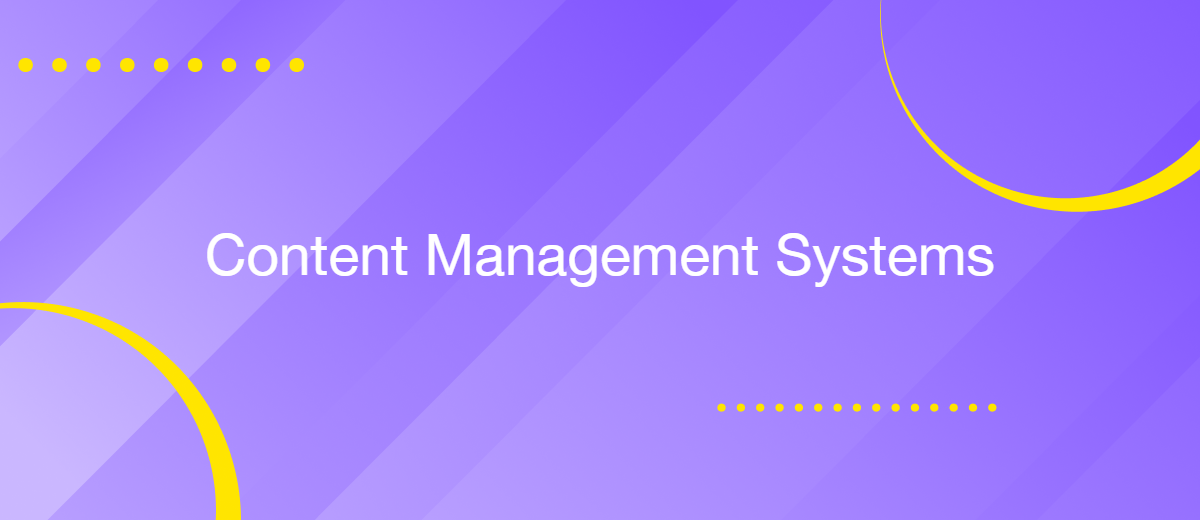5 Best Content Management Systems (CMS) in 2025
Content is at the core of any successful online project. It helps brands tell about themselves, find resonance with the audience, and promote products. That is why content management systems (CMS) are becoming increasingly popular – it is difficult to imagine a modern website without them today. In this article, we will explain what a CMS is and tell you which of them are considered the most convenient and popular in 2025.
What are Content Management Systems
A content management system (CMS) is software that helps you create, edit, store, and publish digital content on websites. Such systems provide users with an intuitive interface for managing materials, as well as support for collaboration, access rights, and workflow automation.
There are several types of CMS:
- Traditional (coupled) CMS. The front-end and back-end are combined. This is convenient but limits flexibility.
- Cloud CMS (SaaS). These systems operate over the Internet, do not require installation, and are easily scalable.
- Decoupled CMS. The front-end is separated from the server part. This gives more freedom in design and integrations.
- Headless CMS. Systems of this type are devoid of a visual interface. Content is transferred to any external application via API.
Today, CMS cover a wide range of solutions – from simple blog platforms to enterprise content management systems for large organizations with high security, flexibility, and integration requirements. However, some companies refuse ready-made services and prefer building content management systems on their own. This path requires more resources but provides full customization for specific business tasks.
- Automate the work of an online store or landing
- Empower through integration
- Don't spend money on programmers and integrators
- Save time by automating routine tasks
Main functions of CMS:
- Content creation and editing. CMS have a large set of tools for working with content of any kind, including text, images, and video. Many have built-in text and graphic editors, as well as HTML code editors. In addition, they have functions for scheduling and automatically publishing content, allowing you to accelerate the process of posting it on sites.
- Digital asset management. CMS serves as a centralized repository for digital materials of various formats: files, texts, images, videos, and more. Users can conveniently structure them using collections and repositories, as well as set up workflows and usage rules. Finished content can be published on websites, social networks, email newsletters, and other marketing channels.
- Website development. Most content management systems have built-in tools for creating, hosting, and updating websites of various types, from marketing pages to information portals and communities. They provide a single, integrated space for content preparation and design work.
- Collaboration and access management. CMS offer a wide range of tools for teamwork. They allow synchronizing the processes of creating, editing, and organizing content in the cloud, as well as publishing it on websites. Users receive different levels of access depending on their roles – author, editor, proofreader, participant, administrator, and others.
Now that you have figured out what these systems are, what they are like, and what their functions are, it's time to get acquainted with specific content management systems examples. We have prepared for you an overview of the five best CMS for 2025 – their capabilities, features, and advantages. This will help you choose the right solution for your tasks.
Contentful
Contentful is a representative of headless types of content management systems, distinguished by its composable architecture. It organizes content into small modular blocks that are easy to edit and adapt to different channels, brands, campaigns, and regions. This approach is especially convenient for companies that need to quickly scale digital solutions and maintain unified content across multiple platforms.
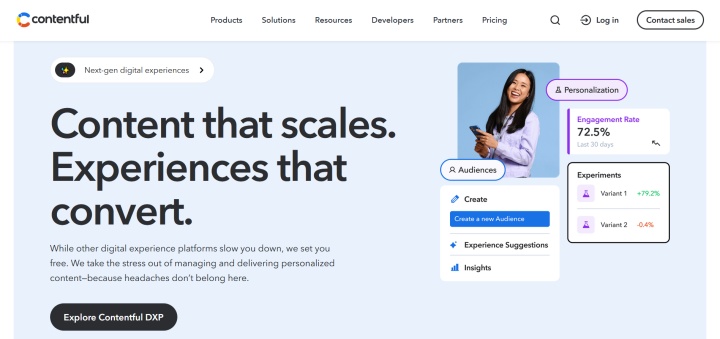
Key features:
- The Live Preview feature provides powerful capabilities for visualizing, optimizing, and collaborating on content.
- The improved content management tab contains a set of preset and custom filters. This allows you to quickly sort content by a number of criteria and find the right one.
- AI Content Type Generator helps users design and create content models based on text prompts.
- AI Image Generator uses OpenAI solutions to automatically generate images based on prompts and then transfer them to the CMS.
- The platform's standard tools can be easily extended and customized through hundreds of ready-made applications hosted in the Contentful Marketplace.
Contentful offers 3 pricing plans:
- Free (10 users, 2 roles, 2 regions, 100,000 API requests per month, 50 GB CDN bandwidth per month, structured content, developer tools, and more).
- Lite (20 users, 3 roles, 3 regions, 1 million API requests per month, 100 GB CDN bandwidth per month, all Free features plus comments, task management, scheduled posts, and more) – $300 per month.
- Premium (custom number of users, roles, and regions, unlimited API requests, extended support, and more) – the cost is calculated individually and is provided upon request.
Those interested in Contentful's enterprise functionality can request trial access to the Premium plan by filling out a form on the official website, indicating information about the company and the project.
Ghost
Ghost is widely regarded as one of the best content management systems. This multifunctional open-source platform is designed for professional authors, editors, and media teams. It provides maximum control over content, allows you to focus on publishing without distractions, and supports monetization through subscriptions. Thanks to the flexibility of the architecture and an active community of developers, Ghost scales well and integrates with other digital tools.
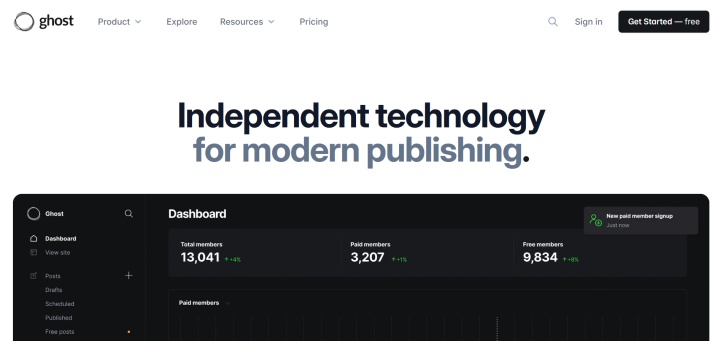
Key features:
- The service allows you to create a website with a unique design, adapted to a specific style and branding. The design can be developed from scratch, or you can choose one of hundreds of professional templates available on the platform.
- The built-in text editor allows you to easily format and edit text, see a preview, and publish content on websites.
- The platform supports various media content formats and dynamic elements: image galleries, videos, GIFs, audio, downloadable files, and interactive maps. This allows you to clearly visualize content, making it more expressive and engaging.
- Ghost has built-in functionality for preparing and conducting email newsletters. It allows you to flexibly segment your audience and effectively manage multiple campaigns simultaneously.
- Native analytics tools provide detailed insights into how your content is performing and how your audience rates it or engages with it.
Ghost offers 4 pricing plans:
- Starter (1 user, 18 free themes) – $9 per month for 500 subscribers.
- Creator (2 users, unlimited themes, 1000+ native integrations, custom integration development) – $25 per month for 1000 subscribers.
- Team (5 users, all Creator features, plus priority support and increased limits) – $50 per month for 1000 subscribers.
- Business (unlimited users, all Team features, plus advanced configuration and 99.9% uptime SLA) – $199 per month for 10,000 subscribers.
The listed prices apply when paying annually in one installment. Opting for monthly payments will result in a higher total cost. All plans come with a 14-day free trial.
You can optimize your workflow for the Ghost platform by implementing automation. This will help increase the efficiency of your tech stack. Set up integrations for Ghost to automatically transfer data from this system to third-party services and applications.
WordPress
WordPress is among the best content management software with a proven reputation and rich functionality suitable for projects of any scale. It is used by large companies and media brands such as Sony, Samsung, eBay, Forbes, and CNN. The platform combines flexibility, scalability, and convenience, allowing you to create both simple blogs and complex corporate sites. Thanks to the open-source code and a wide ecosystem of plugins, WordPress can be easily adapted to any task.
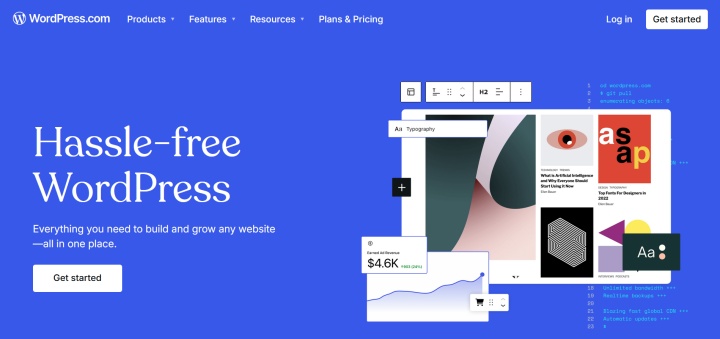
Key features:
- The platform provides access to a vast selection of both free and premium website and e-commerce design templates. All of them are divided into thematic categories: business, blogs, portfolio, design, fashion, music, and so on.
- WordPress users have access to over 59,000 free plugins that can be used to extend the standard capabilities of this CMS. In addition, the platform allows you to add ready-made plugins and develop them yourself.
- A large library of blocks helps to customize the site and manage its content. Among them are an image gallery, news, posts, menu, contacts, and various web design elements.
- Built-in SMM tools provide automatic sending of site content to popular social networks (Facebook, LinkedIn, Tumblr, and others). Moreover, the site can be integrated with email marketing systems and conduct detailed web analytics.
- WordPress provides a solid set of features for managing content. With these features, you can create drafts, track revision history, schedule publications, change privacy settings, and more.
WordPress offers 5 pricing plans:
- Personal (6 GB storage, unlimited web pages, posts, users, and visitors, dozens of premium themes, statistics) – €9 per month.
- Premium (13 GB storage, unlimited web pages, posts, users, and visitors, all premium themes, premium statistics, video upload, Google Analytics integration, and more) – €18 per month.
- Business (50 GB of storage, all Premium features, plus plugins, and more) – €40 per month.
- Commerce (all Business features, plus e-commerce tools, and WooCommerce hosting) – €70 per month.
- Enterprise (individual conditions) – from $25,000 per year.
The prices listed are valid for monthly payment. Choosing an annual billing option can help you save up to 55%. A 14-day free trial is available with every pricing plan.
WordPress also offers a free plan that lets you create a site with a subdomain like sitename.wordpress.com. It includes basic features: hosting, a limited set of themes, and 1 GB of storage. With it, you'll have to put up with ads and the inability to connect your own domain.
Shopify
Shopify is a popular sales content management software that allows entrepreneurs to quickly launch online stores and centrally manage all sales-related content. The platform offers a full set of tools for creating storefronts, placing orders, managing product catalogs, and automating marketing. With an intuitive interface and many built-in integrations, Shopify is suitable for both beginner sellers and large brands operating in the global market.

Key features:
- Frequently used as a headless CMS, the platform offers robust e-commerce tools for seamless content and data management. The user interface (front end) is developed separately and connected via API.
- Shopify's built-in CMS tools provide standard options for customizing pages and website design layouts.
- The platform is focused on e-commerce. Users can create product pages, standard pages, and post pages (blogs).
- Shopify Magic, an AI module, automates the creation of texts – primarily product descriptions, headlines, and emails. It is designed to speed up content work and increase engagement.
- The service has various marketing tools for targeting and audience segmentation, analytics and reporting on campaigns, SEO, and others.
Shopify’s pricing structure includes the following subscription options:
- Basic (10 inventory locations, 24/7 chat support, 3 localized versions of the site, POS Lite, 2% commission for payments through third-party systems) – from €27 per month.
- Grow (all Basic features, plus 5 additional staff accounts, 1% fee for payments via third-party systems) – from €74 per month.
- Advanced (all Shopify features, plus 15 additional staff accounts, 10 inventory locations, 0.6% fee for third-party payments, extended support) – from €384 per month.
- Plus (all Advanced features, plus 200 inventory locations, 50 localized versions of the site, premium phone support, unlimited staff accounts, and more) – from €2,300 per month.
The displayed rates reflect monthly billing. You can save 25% by selecting an annual subscription for your preferred plan. First-time registrants can use the platform for the first 3 days for free. A 3-month trial is available at a promotional rate of €1 per month.
Wix
Wix is a popular website builder among private users and businesses, featuring powerful content management software. It is based on the integrated no-code platform Wix Studio, equipped with a wide range of tools for creating, editing, and publishing materials. It makes the process of website management accessible and convenient, even for users without programming skills.
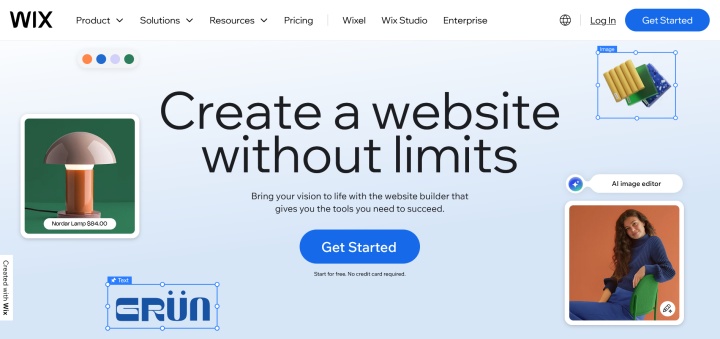
Key features:
- Users can quickly and easily create the desired content structure from scratch using the built-in editor, with convenient tools for design and customization. In addition, they have access to a large library of templates and presets, allowing them to significantly accelerate this process and make the design more professional.
- Wix Studio Editor gives you full control over your web design. You can create professional layouts, upload text and images, connect dynamic content collections, and add filters and effects.
- The platform provides centralized content management across multiple sites at once. It supports publishing updates, coordinating collaboration, and tracking key metrics through an analytics dashboard.
- Administrators gain the ability to flexibly manage member access rights and protect content with privacy settings.
- Wix Data API extends the standard CMS functionality by providing advanced tools for managing web content. It allows you to use filters and sorting, query elements, and aggregate data from collections.
Wix offers 5 plans with a wide price range:
- Basic (10 GB storage, 3 collaborators, 1,500 CMS items, web analytics, free domain for 1 year) – $19 per month.
- Standard (50 GB storage, 5 collaborators, 4,000 CMS items, web analytics, free domain for 1 year, accept payments) – $27 per month.
- Plus (120 GB storage, 10 collaborators, 20,000 CMS items, web analytics, free domain for 1 year, accepting payments, priority support) – $34 per month.
- Elite (unlimited storage, 100 collaborators, 500,000 CMS items, web analytics, free domain for 1 year, payment acceptance, dedicated data infrastructure) – $159 per month.
- Enterprise (all the features of Elite, plus unlimited collaborators, multiple site management, custom integrations, SSO, and more) – pricing is calculated individually and is available upon request.
You can automatically extract data from Wix and transfer it to other systems. No special knowledge or skills required. You can set up integrations for Wix using our platform in a no-code mode.
Final Thoughts
Choosing the right content management system is a key success factor for any online project. The best CMS not only helps manage it effectively but also provides flexibility, scalability, and integration with modern digital tools.
Each of the systems considered in our review has important advantages and is focused on different tasks and audiences. Contentful, as a representative of headless CMS, is a great fit for companies with a need for scaling and multichannel content management. Ghost will be the optimal choice for professional media teams that value control and monetization. WordPress maintains its status as a universal leader due to its huge ecosystem and flexibility. Shopify is ideal for e-commerce projects with wide sales functionality. Wix makes website management accessible to users without technical skills, offering powerful no-code tools.
Today, CMS are not just publishing tools but full-fledged platforms for brand development and effective interaction with the audience. Therefore, when choosing a system, it is essential to consider the specifics of the business, the goals of the project, and the necessary functions – from digital asset management to support for teamwork and integrations.
